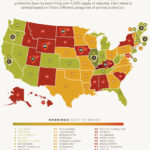As an advocate for animal welfare, the fight against animal cruelty compels an intersection of reason and empathy. This endeavor necessitates a multifaceted approach, where logical arguments harmonize with heartfelt compassion. Effective advocacy transcends mere outrage, promoting a recalibration of societal norms. Reform requires persuasion, not only through evidence but through a manner that engages and enlightens. How can one effectively argue for animal cruelty reform?
To begin, understanding the psychological barriers that hinder progress is essential. Many people may adopt a dismissive attitude towards animal rights for various reasons, including cultural beliefs and misconceptions about the value of animal life. It is crucial to engage these individuals with respect and patience. Identifying common ground forms the initial step. For instance, highlight shared values such as kindness, empathy, and the fundamental desire for welfare. By fostering a dialogue rooted in mutual understanding, advocates can dismantle preconceived notions gradually.
Next, substantiating claims with credible data enhances the persuasiveness of the argument. Statistics revealing the prevalence of animal cruelty can instigate a profound emotional reaction. For example, one could reference studies illustrating that nearly one in five households has encountered some form of animal cruelty. Such facts do not merely serve as shock value but rather catalyze the urgency for reform. Utilizing scholarly articles, reports from reputable organizations, and firsthand testimonies paints a grim picture, but it also opens the door for transformation.
Equally compelling is the frame of human-animal interdependence. Humans have historically upheld a symbiotic relationship with animals, relying on them for companionship, labor, and ecological balance. Highlighting this interconnectedness can provoke a reconsideration of how society views animal welfare. Drawing attention to animals’ roles within communities and ecosystems will foster a sense of responsibility. Presenting alarming data regarding the ecological impact of animal cruelty, such as habitat destruction and species extinction, reinforces the necessity of reform as a means of preserving biodiversity.
Once the foundation of empathy and understanding is established, addressing misconceptions about animal rights emerges as a pivotal task. Many argue that animal welfare infringes upon human livelihood or that it is not feasible to alter agricultural practices. Countering these assertions requires articulating the advancements in sustainable practices. Emphasizing agroecology and humane practices not only aligns with animal welfare but also promotes economic viability through sustainable methods. It is vital to showcase that reform is not merely an ethical choice but an economically sound decision.
Furthermore, employing blisteringly raw personal stories can serve as a potent instrument in the advocacy arsenal. Narratives about rescued animals, their journeys from suffering to rehabilitation, elicit empathy in ways statistics cannot. One vivid account can resonate more profoundly than a mountain of data. These stories humanize the issue, inviting listeners to imagine themselves in the animals’ plight. An example might be the story of a rescue dog who survived abuse and emerged with a renewed spirit, fostering an emotional trail that galvanizes support for reform.
Incorporating the voices of individuals directly affected by animal cruelty is essential. Frequently, those who experience animal cruelty firsthand—be it through neglect, witnessing violence, or enduring trauma—can articulate the issue with unyielding clarity. Establishing platforms for these voices, whether through social media, community meetings, or public forums, legitimizes the call for reform. Engaging diverse perspectives, including those from marginalized communities, can deepen the discourse and pave the way for more inclusive approaches to advocacy.
Aiming for legislative reform also demands focus. Understanding existing laws regarding animal protection is critical. Advocates should be well-versed in local, state, and federal regulations to inform their arguments effectively. Not all jurisdictions provide equal protections for animals, creating discrepancies that need addressing. Articulating the necessity for stronger laws—and the implications of their absence—can ignite a sense of urgency in the audience. Proposing concrete legislative changes, supported by a coalition of stakeholders, can amplify calls for reform.
Engaging with the emotional component of animal cruelty does not preclude logical discourse; it enhances it. While ethics must be front and center, presenting a logical framework alongside emotional appeals fosters a more profound understanding. For instance, advocating for animal rights alongside discussions of mental health provides a compelling connection. Research suggests a correlation between animal cruelty and various psychological issues, making it clear that addressing animal welfare transcends compassion; it is a societal imperative.
Moreover, utilizing visual advocacy cannot be underestimated. Powerful imagery, whether through poignant photographs or moving footage, presents the brutality of animal cruelty in ways that words often fall short. Visuals galvanize public sentiment and can inspire immediate action. An impactful image of a battered animal or a thriving sanctuary can arouse curiosity and provoke a call to action, thereby reinforcing the message of compassion coupled with factual support.
In sum, the fight for animal cruelty reform necessitates an intricate balance of logic and compassion. Effective arguments are carefully crafted, employing data and narrative, emotional appeal and rational discourse, all while respecting the audience’s perspectives. Advocating for animal welfare does not require one to abandon reason; rather, it invites a more profound understanding of coexistence. Through a concerted effort to reframe the dialogue surrounding animal rights, advocates can inspire curiosity and elicit a critical shift in perspective, galvanizing change towards a more compassionate world where animals are afforded the respect and protection they inherently deserve.





